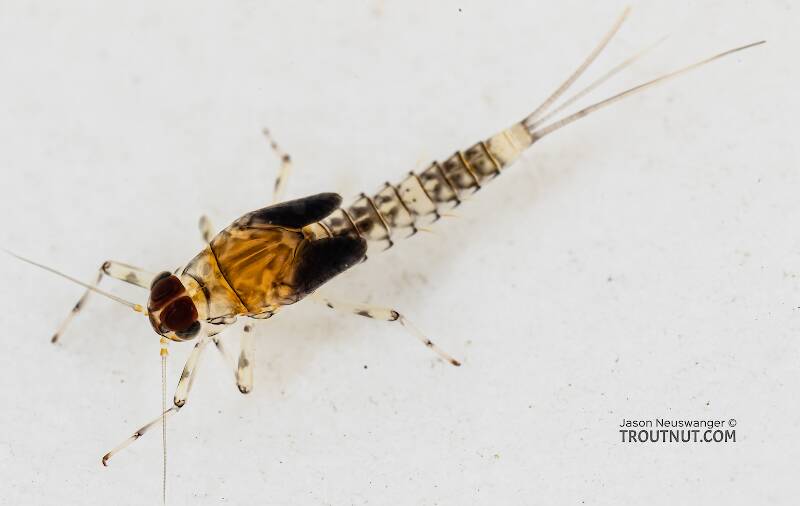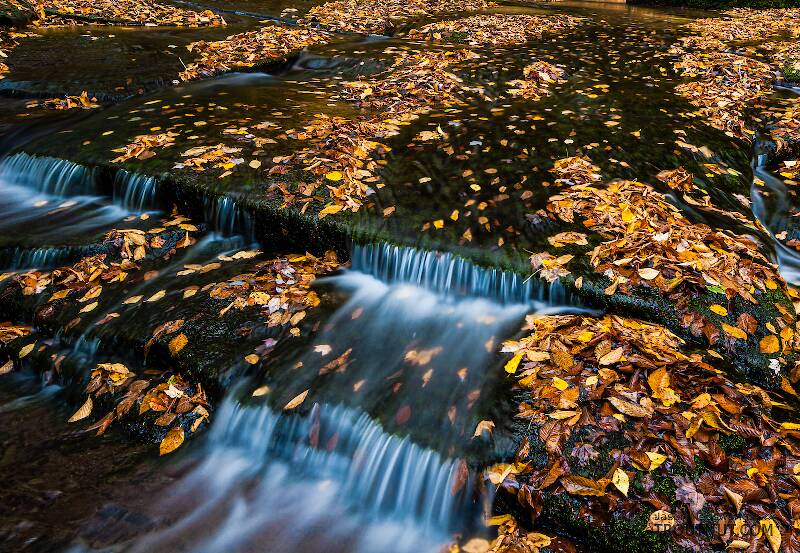
Hex Mayflies
Hexagenia limbata
The famous nocturnal Hex hatch of the Midwest (and a few other lucky locations) stirs to the surface mythically large brown trout that only touch streamers for the rest of the year.
Featured on the forum

This specimen keys pretty easily to Onocosmoecus, and it closely resembles a specimen from Alaska which caddis expert Dave Ruiter recognized as this genus. As with that specimen, the only species in the genus documented in this area is Onocosmoecus unicolor, but Dave suggested for that specimen that there might be multiple not-yet-distinguished species under the unicolor umbrella and it would be best to stick with the genus-level ID. I'm doing the same for this one.

Troutnut is a project started in 2003 by salmonid ecologist Jason "Troutnut" Neuswanger to help anglers and
fly tyers unabashedly embrace the entomological side of the sport. Learn more about Troutnut or
support the project for an enhanced experience here.
Dark Olive Brown Spinners
Like most common names,"Dark Olive Brown Spinner" can refer to more than one taxon. They're previewed below, along with 1 specimen. For more detail click through to the scientific names.
Mayfly Species Baetis flavistriga
These are very rarely called Dark Olive Brown Spinners.
This is one of the most widespread and abundant Baetis species, and it may produce fishable hatches under a variety of conditions.
This species is known in angling books by several old synonyms, including Baetis quebecensus, Baetis levitans, Baetis cingulatus, and Baetis phoebus, in addition to the correct name.
This species is known in angling books by several old synonyms, including Baetis quebecensus, Baetis levitans, Baetis cingulatus, and Baetis phoebus, in addition to the correct name.

This nymph keys to Baetis assuming the villipore is present (hard to see in my photos or scope), and within that genus it tentatively keys to the flavistriga species complex, of which Baetis flavistriga itself is by far the most common in Washington state, so that's the most likely ID.
See 2 more specimens...
Mayfly Species Dannella simplex
These are very rarely called Dark Olive Brown Spinners.
Although by no means a superhatch, this species can be important. Authors who discuss it lament the general lack of credit it receives for the fine hatches it produces on some streams.

